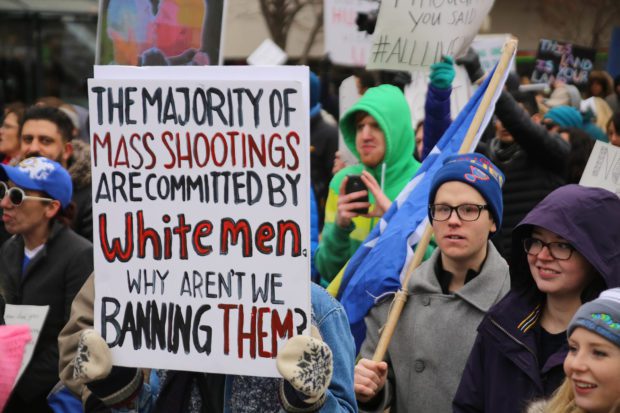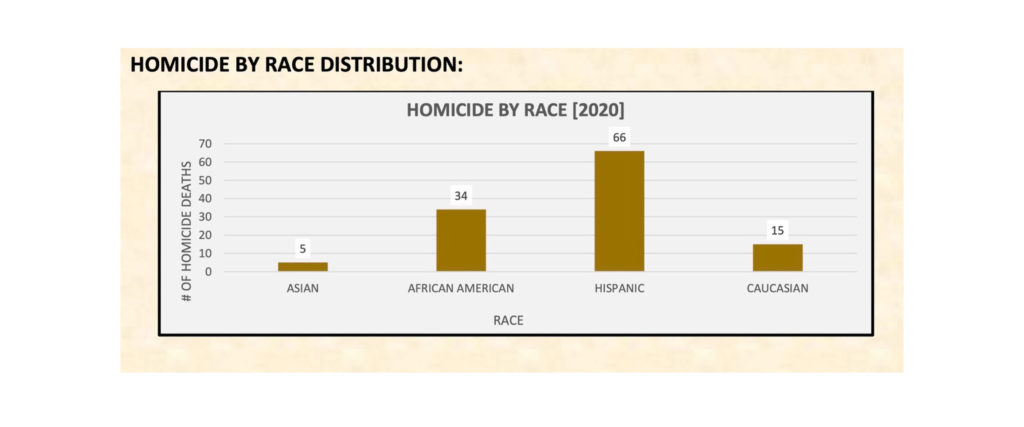
The recent mass killings at a parade in Highland Park, Ill.; an elementary school in Uvalde, Texas; and a supermarket in Buffalo, N.Y., brought increased media and political attention to the long-standing problem of gun violence in America. For the past several years, Fresno has also experienced increased gun violence and gun deaths.
Efforts are under way both nationally and locally to identify why there is so much gun violence and what are the best solutions to the problem.
People and organizations in Fresno want to do something to stop the gun violence and gun deaths. One such group is a multifaith/interfaith community entity called Enough Gun Violence, which meets at St. James Episcopal Cathedral in Fresno.
Their June 29 meeting was informational, with speakers providing some context to the challenge of gun violence, while atso encouraging the public to act.
Sam Colley-Toothaker, the dean of St. James Cathedral, paraphrased Edward Everett Hale, saying, “We can’t do everything, but we can do something.”
The meeting ended with a mass letter signing event addressing Congressional representatives on gun violence.
Their July 16 meeting garnered public input on gun violence and attempted to set strategies to address gun violence—bearing in mind that the way forward will be a marathon rather than a sprint.
A mass killing, the focus of so much media attention, is defined by the National Institute of Justice as an incident in which four or more victims are killed with a firearm in a publicly accessible space. Yet, mass killings make up less than 1% of all gun deaths.
Mass killings can occur at workplaces, places of worship, schools, stores and entertainment venues. According to federal data, however, far more common gun deaths occur daily inside homes, outside bars and on the streets of cities.

Who Is Affected by Gun Violence in Fresno?
Gun violence does not impact all people equally. No area of Fresno is completely safe from gun violence. Many people in Fresno who are most worried about gun violence and crime actually live in areas that are the least affected by gun violence. Different types of gun violence (e.g., homicide versus suicide) affect different demographic groups in distinct ways.
For example, gun suicide, according to Pew Research, accounts for 54% of all gun deaths. Gun suicide generally affects older White men living in rural areas, whereas gun homicide primarily affects younger Black and Brown men living in urban areas.
Gun homicide in Fresno mainly affects areas populated by poor people and young men of color. Nationwide, Black men are 17 times more likely than other Americans to be killed by a gunshot fired by someone else. Conversely, White men are six times more likely to die by suicide than other Americans.
The data show that rather than being killed in a mass killing or by someone they don’t know, Americans are more likely to be shot and killed by a family member, an acquaintance or an intimate partner (spouse, domestic partner or dating partner). These intra-community shootings and deaths account for the largest portion of gun homicides. Only about 25% of firearm homicides are committed by a stranger. And less than 1% of firearm homicides are committed in a mass killing.
Data from the 2020 Fresno County Sheriff’s Office Coroner Unit statistics (the most recent data available) show that of the 120 homicides in Fresno County, almost 90% were gun homicides and 83% involved African Americans and Hispanics. Almost 30% of gun homicides involved African Americans even though they are less than 5% of Fresno County’s population.
Three zip codes accounted for almost half of all homicides in the City of Fresno. All three are poor, historically segregated and suffer from long-term societal disinvestment.
Studies evaluating the root causes of gun violence have shown that gun homicide is more likely to occur not only where there is concentrated poverty but also where there has been long-standing societal disinvestment and segregation in terms of housing, education, healthcare and jobs.
Fresno has a long history of both de facto and de jure segregation (e.g., covenants and redlining) and disinvestment in segregated communities. It also has areas of concentrated poverty.
Disinvestment encourages the downward spiral of concentration of poverty and results in fewer opportunities for people to leave poverty. Disinvestment affects many aspects of the quality of life in poor areas besides education and access to healthcare, for example, access to banks, the availability of grocery stores, the presence of parks and environmental quality.
Some studies have pointed to the large number of guns in the United States as the root cause of the high number of gun deaths. There are more guns in the United States than people. It is commonly reported that as of 2021 there are more than 400 million guns in the United States, more than 20 million of which are AR-15 assault style rifles.
According to the most recent report (2018) by the Switzerland-based Small Arms Survey, the United States, with less than 5% of the world’s population, has 46% of the world’s civilian-owned guns.
Although the large number of guns and easy accessibility are major contributors to gun violence and deaths in the United States, those are not considered the root causes of increasing gun violence. The actual root causes of intra-community gun violence are concentrated poverty due to segregation, racial inequities and disinvestment in Black and Brown communities. Per the Brady Center to Prevent Gun Violence, “Like lynching, gun violence is a racial justice issue.”
If not done well, gun violence prevention could actually worsen racial inequity. When developing solutions to gun violence, it is important to remember that no matter how well intentioned those solutions might be, they “can exacerbate or compound upon the harms suffered by impacted communities if they are made without careful analysis and the input of those directly affected by it.”
Fresno-based Enough Gun Violence has developed community working groups that seek to welcome and expand community involvement. Enough Gun Violence is committed to working against the policies, practices and laws that have allowed gun violence to flourish.
The National Rifle Association, aka the NRA, invested millions of dollars over the past 30–40 years to fashion the current gun policies in America. Enough Gun Violence hopes it does not take that long to reverse those deadly policies.
Take Action!
Fresno-based Enough Gun Violence working against the policies, practices and laws that have allowed gun violence to flourish. To assist in these efforts, contact Dean Sam Colley-Toothaker at dean@stjamesfresno.org.
